Summary
Background
Water security is a matter of life and death for the world. People are not only causing water-related risks and stresses, they are also negatively affected by them — in many cases exacerbated by climate change. Since the publication of The Geography of Future Water Challenges in 2018, events of extreme flooding, drought, wildfires and tropical storms have increasingly disrupted societies and ecosystems around the world. Without the urgently needed, collective and effective responses, water- and climate-related disasters are projected to get worse. This follow-up study, requested by the Dutch Ministry of Infrastructure and Water Management, shows that we can bend the trend of increasing water- and climate-related stresses, as presented in the 2018 report. Captured in infographics and focused on high ambition future pathways, in particular, an overview is given of what could be achieved with concrete measures infour hotspot landscapes: river basins, deltas and coasts, dryland regions and cities.
Results show that we can strongly reduce flood risks, subsidence, the negative effects of new dams, and the risks of migration and conflict, while improving crop production and water-use efficiency in agriculture, households and industries, often in combination with restoring ecosystem quality, strengthening biodiversity and reducing social inequities.
On the other hand, the already existing industry, infrastructure, dams and the projected level of nutrient emissions will continue to decrease water security and hamper ecological restoration of freshwater ecosystems. The interrelated global water, climate change and biodiversity crises show that current value systems, policies and economic practices are not suitable for bending the trend. It is clear, now more than ever, that water needs to be at the top of everyone’s agenda, from local actors to global organisations and from public to private enterprises around the world.
(Direct quote from the forward of the report)
Setting the Scene
This section of the report lays out the context for future pathways. Highlighting the need for water, water-related risk, inequalities, climate risks, hotspots and river basin landscapes and presents a rationale fr bending the trend on climate adaptation approaches and taking high-ambition pathways to success.
Exploring Future Water Pathways
Taking a landscape-based approach, this section of the report explains the current and future challenges and outlines place-based solutions that consider costs, success rates and links to SDGs, for river basins, deltas and coasts, drylands, and cities.
The Way Forward
The final section of the report provides 9 critical actions to be highly ambitious and proactive in preparing for future water challenges. Following three areas of focus to "bend the trend" on water adaptation 1. increasing urgency, 2. using innovative approaches, and 3. improving global governance.
The 9 actions are:
1. Acknowledge the importance and pivotal role of water
2. Valuing water: broadening the scope
3. Start now, but plan way beyond 2030 and be adaptive
4. Let water be leading: adopt a river-basin and ecosystem-based approach
5. Envision the future: develop High ambition pathways
6. Improve policy coherence
7. Strengthen global water governance and capacity
8. Sclaing up funding for water and climate adaptation
9. Building a shared water agenda and process to create perspective
Direct link: https://www.pbl.nl/sites/default/files/downloads/pbl-2023-geography-of-future-waterchallenges-bending-trend-4376.pdf


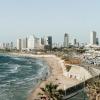



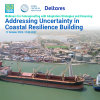

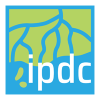


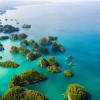
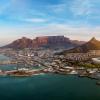
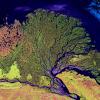

Trending Discussions
From around the site...
“Absolutely interested! I'll connect via email to discuss reviewing and enhancing the Economic Analysis of Climate...”
Adaptation-related events at COP28 (all available to follow/stream online)
“Please check out these adaptation-related events taking place at COP28 - all available online (some in person too if...”
Shining a light for biodiversity – four perspectives to the life that sustains us. Four hybrid sessions.
“30 November to 19 December 2023 - Four Sessions Introduction The SDC Cluster Green is happy to invite you to the...”